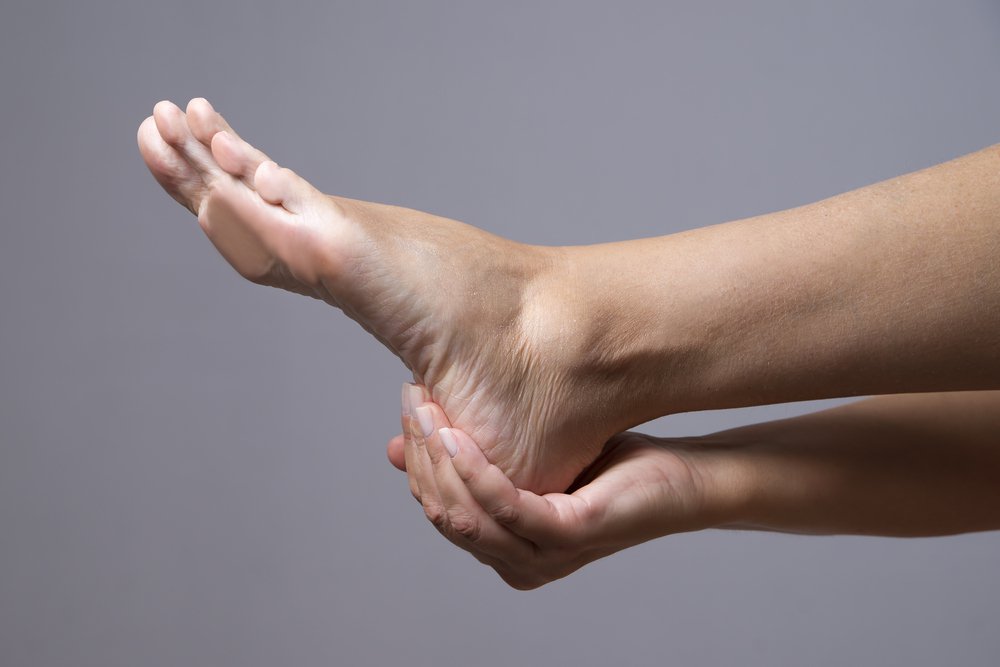 Your peripheral vascular system is an extremely important part of your overall circulatory system. It consists of the veins and arteries in your extremities, specifically the arms, hands, legs, and feet. These veins and arteries are responsible for delivering blood to these areas, ensuring that the muscles and nerves therein have enough oxygen to function properly. Peripheral artery disease (PAD) -- a comorbid disease with diabetes that involves deposits of fat and calcium narrowing the peripheral arteries -- can seriously compromise these areas, especially the feet.
Your peripheral vascular system is an extremely important part of your overall circulatory system. It consists of the veins and arteries in your extremities, specifically the arms, hands, legs, and feet. These veins and arteries are responsible for delivering blood to these areas, ensuring that the muscles and nerves therein have enough oxygen to function properly. Peripheral artery disease (PAD) -- a comorbid disease with diabetes that involves deposits of fat and calcium narrowing the peripheral arteries -- can seriously compromise these areas, especially the feet.
At Sinai Laser Vein Center, we want our patients to be aware of how vascular conditions like peripheral artery disease can affect their bodies, and how important it is to practice preventative vascular care. Here are four ways peripheral artery disease can affect your feet:
1. PAD Creates Pain and Discomfort
As we’ve said previously, peripheral artery disease (PAD) occurs as a result of plaque blockages in your peripheral vascular system. When these blockages become large, they can hinder blood flow, and in serious cases, may even completely block your arteries. This can lead to some extremely uncomfortable symptoms, including:
- Pain, even while your feet are at rest
- Cramping in the feet and leg
- Fatigue in the feet and legs
- Numbness
- Tingling
- Pain or discomfort in the buttocks
These peripheral artery disease symptoms can interfere with your ability to walk, and even your ability to settle down for a full night’s sleep.
2. PAD Can Make Your Feet Constantly Cold
One of the most damaging effects of peripheral artery disease (PAD) is the narrowing of your peripheral arteries that comes with the buildup of plaque. Because these arteries are essential for sending the necessary amount of blood to your legs, the fact that they become narrow in a case of PAD means that your circulation will become poor and insufficient. This can lead to persistent coldness in one or both of your feet. If your cold feet are happening as a result of PAD, it may be difficult to keep them warm, no matter how hard you try.
3. PAD Worsens Existing Foot Conditions
Usually, certain simple podiatric conditions such as bunions, hammertoes, ingrown nails, or foot fungus are easy to treat with the right medical attention. However, if you’ve received a peripheral artery disease diagnosis, these minor concerns can become serious, and potentially even dangerous. The lack of sufficient blood flow to your feet will compromise the natural healing process by which things like sores, blisters, and small cuts are able to close and resist infection. Without a normal healing process, these wounds can become extremely serious, pose significant risks to your health, and require professional intervention in order to heal effectively.
4. PAD and Neuropathy Can Endanger Your Feet
Peripheral artery disease (PAD) is often comorbid with diabetes, which means that in addition to PAD, you may have neuropathy as well. Peripheral neuropathy describes nerve damage that occurs as a result of swollen blood vessels, which can cause numbness in your feet that makes you unaware of any wounds or deformities that would otherwise cause you pain. The combination of PAD and neuropathy often leads to the development of non healing ulcers, which can become large wounds that eat away at the nerves, tissues, and flesh of the foot. For this reason, diabetic PAD is one of the most common reasons(opens in a new tab) why foot and leg amputations are performed in the US.
If you think you may be struggling with the beginning of peripheral artery disease, or you have a foot wound that’s not healing itself, it’s time to visit a peripheral artery disease doctor to start receiving PAD disease treatment as soon as possible.
Looking for a PAD disease expert, wound care expert or vascular surgeon in New York? Our team at Sinai Laser Vein Center is highly specialized in the diagnosis and treatment of peripheral artery disease, and we’re here to help you receive the care you need. Schedule your MRI appointment today and take the first step toward healthy veins.
